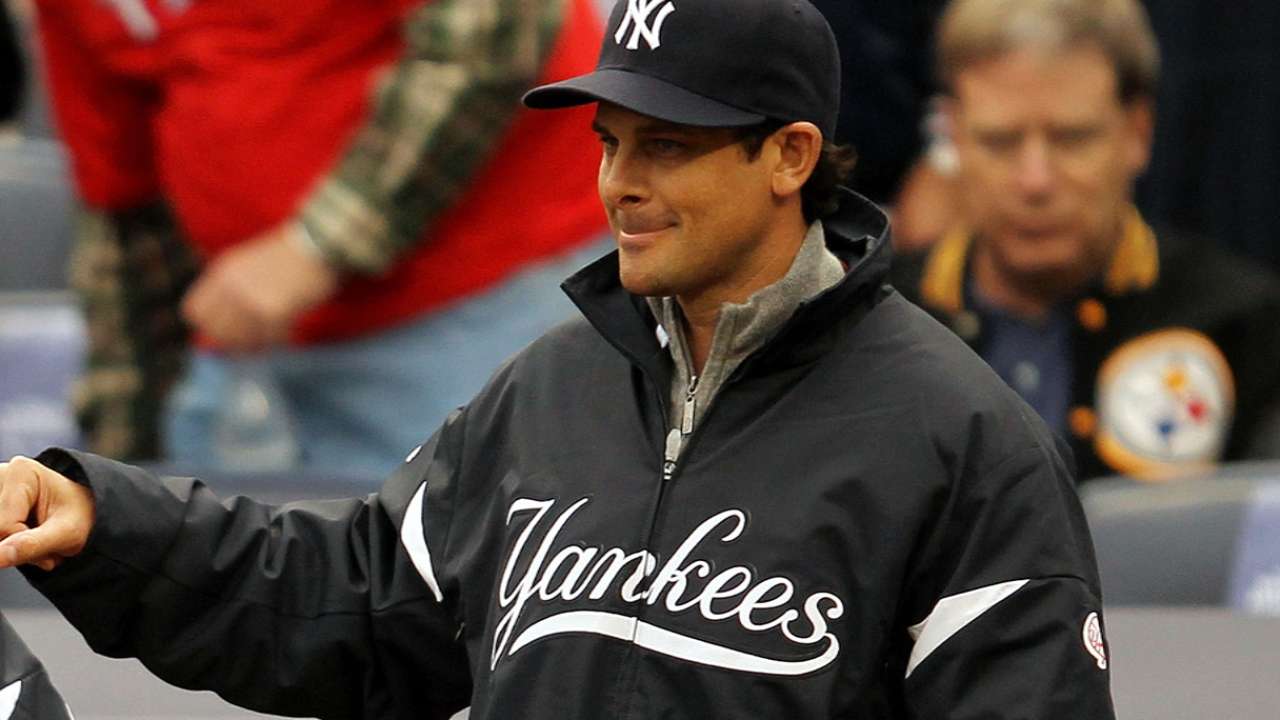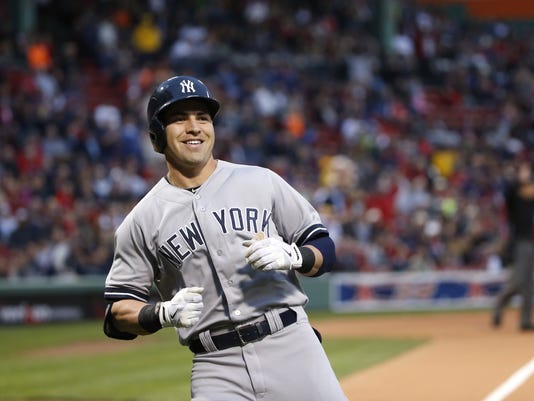The only constant this offseason for the New York Yankees and their coach staff has been change. Out after ten seasons in the Bronx was Joe Girardi, in was a former Yankees postseason hero in Aaron Boone. Out with the Yankees bench coach after not landing the Yankees managerial position was Rob Thomson, in his spot as bench coach is now Boone’s right-hand man Josh Bard. Let’s meet the former MLB player and current bench coach of the New York Yankees. This is Meet a Manager: The Josh Bard Edition.
Joshua David Bard was born on March 30, 1978 (Happy Early BDAY!!) in Ithaca, New York. When bard was just an infant his family moved to Elizabeth, Colorado where he attended Cherry Creek High School in Greenwood Village, Colorado. Bard was drafted out of High School by the Minnesota Twins in the 35th round of the 1996 Major League Baseball First Year Players Draft but did not sign. Instead Bard attended Texas Tech University where he was a three-time All-American while playing baseball for the Texas Tech Red Raiders. While there Bard caught the eye of the Colorado Rockies who drafted him in the 3rd round of the 1999 MLB Draft, eventually signing him on August 12, 1999. Bard’s professional career was ready to begin.
After serving as the backup catcher in Boston the Red Sox traded Bard to the San Diego Padres along with Cla Meredith for Doug Mirabelli. The Red Sox had traded Mirabelli to the Padres just a few weeks before, had more experience and better results catching Tim Wakefield leading Boston to make the move, apparently Bard and his passed balls were not cutting it in Bean Town. Bard backed up Mike Piazza while in San Diego and hit .338 in 231 at-bats after the trade despite being a career .240 hitter before his time in San Diego. While with the Padres Bard was catching pitcher Clay Hensley on August 4, 2007 as he gave up a pretty big home run to some guy named Barry Lamar Bonds. Apparently, that was like his 755th home run of his career or something, but I don’t know because I have never heard of the guy. Anyway, Bard was finally named as a starting catcher in 2008 with the Padres, but his hot hitting from the previous season did not carry over to the new year. Bard played out the 2008 season with San Diego before leaving the Padres for free agency following the year.
Bard returned to the Boston Red Sox on a one-year deal worth $1.6 million for the 2009 season, but by March 18 he was released by the club. Three days after being released bard signed on with the Washington Nationals on a minor league deal with an invitation to spring training. Bard made the team and eventually got into 90 games with the Nationals, hitting just .230. After the 2009 season Bard was once again a free agent, this time signing a minor league deal with the Seattle Mariners. Bard continued to bounce around with various teams including the Mariners and the Los Angeles Dodgers before retiring officially after the 2012 season.
Welcome back, Josh. No experience is no longer an excuse, do us proud and Go Yankees!








/cdn.vox-cdn.com/uploads/chorus_image/image/59790477/E1089635_1EBB_4AFE_8059_D11B29EAEF39.0.png)


/cdn.vox-cdn.com/uploads/chorus_image/image/55867083/usa_today_10069646.0.jpg)
